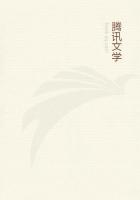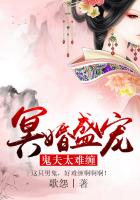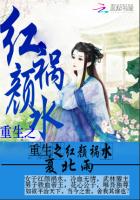The GRAPE HYACINTH (Muscari botrycides), also known as Baby's Breath, because of its delicate faint fragrance, escapes from gardens at slight encouragement to grow wild in the roadsides and meadows from Massachusetts to Virginia and westward to Ohio.Its tiny, deep-blue, globular flowers, stiffly set around a fleshy scape that rises between erect, blade-like, channeled leaves, appear spring after spring wherever the small bulbs have been planted.On the east end of Long Island there are certain meadows literally blued with the little runaways.
PURPLE TRILLIUM, ILL-SCENTED WAKE-ROBIN or BIRTH-ROOT(Trillium erectum) Lily-of-the-Valley family Flowers - Solitary, dark, dull purple, or purplish red; rarely greenish, white, or pinkish; on erect or slightly inclined footstalk.Calyx of 3 spreading sepals, 1 to 1 1/2 in.long, or about length of 3 pointed, oval petals; stamens 6; anthers longer than filaments; pistil spreading into 3 short, recurved stigmas.
Stem: Stout, 8 to i6 in.high, from tuber-like rootstock.Leaves:
In a whorl of 3; broadly ovate, abruptly pointed, netted-veined.
Fruit: A 6-angled, ovate, reddish berry.
Preferred Habitat - Rich, moist woods.
Flowering Season - April-June.
Distribution - Nova Scotia westward to Manitoba, southward to North Carolina and Missouri.
Some weeks after the jubilant, alert robins have returned from the South, the purple trillium unfurls its unattractive, carrion-scented flower.In the variable colors found in different regions, one can almost trace its evolution from green, white, and red to purple, which, we are told, is the course all flowers must follow to attain to blue.The white and pink forms, however attractive to the eye, are never more agreeable to the nose than the reddish-purple ones.Bees and butterflies, with delicate appreciation of color and fragrance, let the blossom alone, since it secretes no nectar; and one would naturally infer either that it can fertilize itself without insect aid - a theory which closer study of its organs goes far to disprove - or that the carrion-scent, so repellent to us, is in itself an attraction to certain insects needful for cross-pollination.Which are they?
Beetles have been observed crawling over the flower, but without effecting any methodical result.One inclines to accept Mr.
Clarence M.Weed's theory of special adaptation to the common green flesh-flies (Lucilia carnicina), which would naturally be attracted to a flower resembling in color and odor a raw beefsteak of uncertain age.These little creatures, seen in every butcher shop throughout the summer, the flower furnishes with a free lunch of pollen in consideration of the transportation of a few grains to another blossom.Absence of the usual floral attractions gives, the carrion flies a practical monopoly of the pollen food, which no doubt tastes as it smells.
The SESSILE-FLOWERED WAKE-ROBIN (T.sessile), whose dark purple, purplish-red, or greenish blossom, narrower of sepal and petals than the preceding, is seated in a whorl of three egg-shaped, sometimes blotched, leaves, possesses a rather pleasant odor;nevertheless it seems.to have no great attraction for insects.
The stigmas, which are very large, almost touch the anthers surrounding them; therefore the beetles which one frequently sees crawling over them to feed on the pollen so jar them, no doubt, as to self-fertilize the flower; but it is scarcely probable these slow crawlers often transfer the grains from one blossom to another.A degraded flower like this has little need of color and perfume, one would suppose; yet it may be even now slowly perfecting its way toward an ideal of which we see a part only complete.In deep, rich, moist woods and thickets the.sessile trillium blooms in April or May, from Pennsylvania, Ohio, and Minnesota southward nearly to the Gulf.
LARGER BLUE FLAG; BLUE IRIS; FLEUR-DE-LIS; FLOWER-DE-LUCE(Iris versicolor) Iris family Flowers - Several, 2 to 3 in.long, violet-blue variegated with yellow, green, or white, and purple veined.Six divisions of the perianth: 3 outer ones spreading, recurved; 1 of them bearded, much longer and wider than the 3 erect inner divisions; all united into a short tube.Three stamens under 3 overhanging petal-like divisions of the style, notched at end; under each notch is a thin plate, smooth on one side, rough and moist (stigma) on side turned away from anther.Stem: 2 to 3 ft.high, stout, straight, almost circular, sometimes branching above.
Leaves: Erect, sword-shaped, shorter than stem, somewhat hoary, from 1/2 to 1 in.wide, folded, and in a compact flat cluster at base; bracts usually longer than stem of flower.Fruit: Oblong capsule, not prominently 3-lobed, and with 2 rows of round, flat seeds closely packed in each cell.Rootstock: Creeping, horizontal, fleshy.
Preferred Habitat - Marshes, wet meadows.
Flowering Season - May-July.
Distribution - Newfoundland and Manitoba to Arkansas and Florida.
"The fleur-de-lys, which is the flower of chivalry," says Ruskin, "has a sword for its leaf and a lily for its heart." When that young and pious Crusader, Louis VII, adopted it for the emblem of his house, spelling was scarcely an exact science, and the fleur-de-Louis soon became corrupted into its present form.














